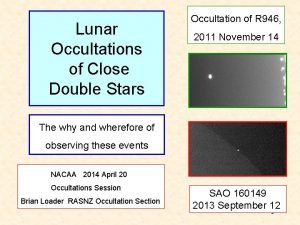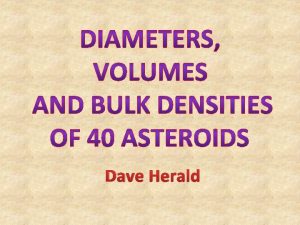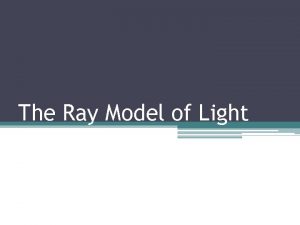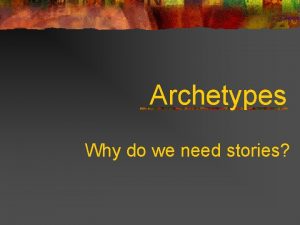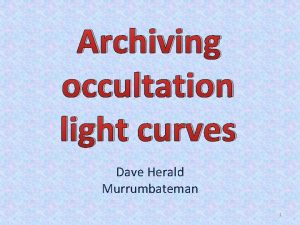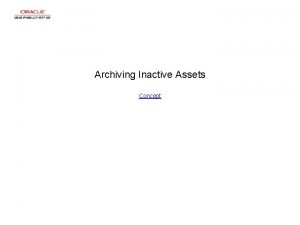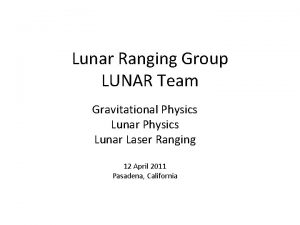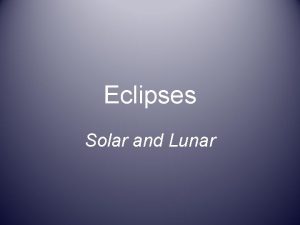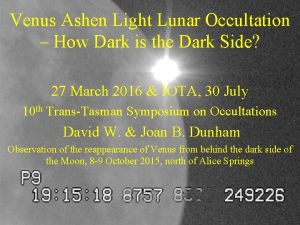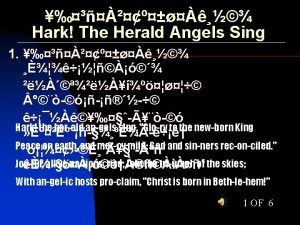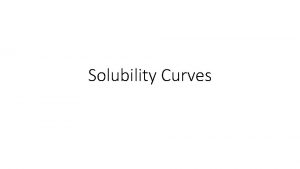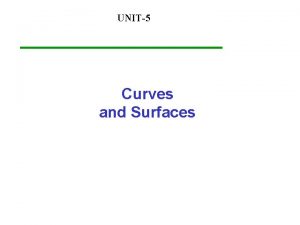Archiving occultation light curves Dave Herald Historically lunar















- Slides: 15

Archiving occultation light curves Dave Herald

• Historically, lunar occultations were observed visually, and were treated as binary events – except for when a binary star was involved. • Fading caused by stellar diameter or Fresnel diffraction were treated as an annoyance rather than something to measure

• In the late 1900’s, considerable interest in discovering double stars from lunar occultations. Many stars were claimed to be close double stars as a result of a visual observer recording an event as non-instantaneous. Modern video recordings of occultations of such stars show the absence of any companion in over 70% of observations many visual occultation ‘discoveries’ were caused by Fresnel diffraction &/or stellar diameter

• Video recording occultations started becoming common around 2000. Now-a-days ‘everyone’ uses video; almost no observations are made visually. • However convenient tools to analyse recordings did not exist in 2000 – the videos were analysed by manually stepping through frame-by-frame. Some people converted each video frame to a FITS image, to measure with conventional astronomical software

• Limovie was released in June 2005. It revolutionised the measurement of videos, generating a light curve that could be easily viewed analysed • A similar tool, Tangra, was released in 2009 Tangra was focussed more on asteroidal occultations than Lunar occultations. • With GPS time stamps video-inserted, possible to easily measure occultation light curves with a 35 msec resolution in time.

• For 10 years we have been measuring light curves on a routine basis. • Ready access to light curves is important for: – detecting double stars – Analysing ‘gradual’ light curves to distinguish between stellar diameter and Fresnel diffraction – Analysis of K 2 observations of that star

• Our reporting and data retention processes are still based on the traditional on/off nature of an occultation event. • We have been slow to recognise the value of, and retain, the data inherently present in an occultation light curve.

i. The Vizie. R astronomical data archiving system is very supportive of us archiving our light curves ii. Light curves can be used to detect double stars, or put a limit on the parameters of a possible double star iii. For large bright stars (eg Antares, Aldebaran), possibilities of measuring brightness variation across the stellar disk iv. The K 2 extension of the Kepler spacecraft mission – our light curves can be important to the analysis of the K 2 observations

Challenges/tasks • decide what data needs to be collected. The light curve needs to be accompanied by all the data needed to interpret the light curve. Eg – Date – Light curve sample duration – star ID – lunar librations & limb slope – observing location – observer identification

• It must be easy to gather the required data – Kazuhisa has added functionality in Limovie to ‘copy’ the light curve data to the clipboard so taht it can be pasted into a reporting tool – Tangra already allows the light curve data to be ‘copied’ – Occult now includes basic functionality to prepare a light curve report as part of the Lunar Occultation observations editor, and from the Minor Planet observations tab of Occult

• It must be easy for observers to send their reports – Occult has implemented one approach. However it assumes the user can use Occult to send emails – The approach involves emailing reports (which are zipped for emailing). Would it be better to upload reports? Would uploading increase risks of being swamped by SPAM?

• Must be easy to consolidate reports – Detect duplicate reports of an event – even when the time period, time resolution, or star identification, differs – Arrange the data in a way that facilitates access – Create indexes to access the data by various star identifications or other parameters – Include the K 2 identification where appropriate, revising as new K 2 fields are established.

• Must be easy to create a version to mount on Vizie. R • Need to establish a data file format that meets Vizier. R, Occult, and user requirements • Make the file available as an Occult download, for querying within Occult? • Establish a nominal interval between updates of the file (monthly? 3 -monthly? yearly? )

• Need to have a suitable data format – Need to allow for easy expansion of data fields in the future – Needs to meet Vizie. R requirements

Summary • Archiving our observed light curves is an important and logical extension of our data recording • It is important that the process be as simple as possible for everyone involved • It will take some time to get a decent system operational • Hopefully everyone will appreciate the value of archiving their observational data, and be patient with the implementation of a suitable tool.
 Double occultation
Double occultation Dave herald
Dave herald Herald of purple light
Herald of purple light Light light light chapter 23
Light light light chapter 23 Light light light chapter 22
Light light light chapter 22 Chapter 22
Chapter 22 Yakima herald republic circulation
Yakima herald republic circulation Name the two parts that make up most mirrors.
Name the two parts that make up most mirrors. Pete rosengren daily herald
Pete rosengren daily herald The nz herald
The nz herald Historical significance
Historical significance Joseph campbell hero archetype
Joseph campbell hero archetype Physical education during primitive time
Physical education during primitive time Hunting group of companions archetype examples
Hunting group of companions archetype examples Carl jung archetypes examples
Carl jung archetypes examples Othello summary act 2
Othello summary act 2
